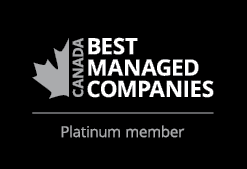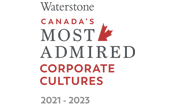Depending on the industry, location, and other factors, today’s employers can expect to employ a workforce that includes up to four distinct generations, each with its own characteristics and experiences.
Employers considering flexible benefit plans for their multi-generational workforce and who understand the psychology of choice and effective benefit plan communication can improve decision-making outcomes and see an increase in employee engagement and satisfaction.
Understanding the psychology of choice
The psychology of choice refers to the study of how individuals make decisions when faced with multiple options or alternatives. It explores the cognitive processes, motivations, and biases influencing our choices. Several key theories and concepts related to the psychology of choice can impact the success of a benefit program, including the paradox of choice and decision fatigue.
The paradox of choice suggests that while having more options can initially seem desirable, it can also lead to decision paralysis, anxiety, and dissatisfaction. Decision fatigue is the idea that difficult choices can make people feel mentally exhausted and unable to make good decisions. Understanding the paradox of choice and decision fatigue is critical when creating benefit plans.
The psychology of choice also relates to framing and how benefit plan details are communicated to employees. How a choice is presented or framed can significantly influence decision-making. People may respond differently depending on whether an option is a potential gain or loss. Benefit plan sponsors need to consider the psychology of choice and how the benefit plan’s communication can help the employee understand their plans.
Communicating your benefit plan to employees
A benefit program is only as successful as its communication strategy. The communication strategy is more than plan-related email announcements and posters or reminders on the human resources information system (HRIS) portal. A good communication strategy includes regular touchpoints with employees to learn how they feel about their current benefit plan and what’s working or missing. You don’t have to roll out a complete annual benefits survey; questions can be added to regularly-scheduled employee engagement surveys. For more information on benefit plan communication, visit Why You Need a Benefits Communication Plan for Employees.
Let our team of expert consultants help you customize your group benefits program.
Don’t assume you know what your employees want
Unconscious biases are social stereotypes about certain groups of people that individuals form outside their own conscious awareness. Everyone holds unconscious beliefs about various social and identity groups, and these biases stem from one’s tendency to organize social worlds by categorizing. Unconscious bias can play a role in employers’ decisions regarding benefit plans. It can manifest in benefit plan strategies in various ways, including:
- Gender bias: Employers may unintentionally design benefit plans favouring one gender over another. For instance, if a plan covers fertility treatments but excludes contraception or maternity care coverage, it may reflect a bias that prioritizes male employees’ needs over female employees.
- Age bias: Employers might unknowingly create benefit plans that cater more to the needs and preferences of certain age groups, resulting in plans that overlook the specific requirements of older or younger employees, leading to inequalities in access and support.
- Cultural bias: Unconscious bias can also influence benefit plans based on cultural assumptions or stereotypes. For instance, a plan that offers extensive coverage for traditional Western medicine but limited coverage for alternative or holistic therapies may disregard the preferences and values of certain cultural or ethnic groups.
- Family bias: Employers may inadvertently design benefit plans that favour certain family structures over others. For example, a plan that offers generous parental leave benefits but excludes support for adoptive parents or non-traditional families could reflect a bias towards the traditional nuclear family model.
Addressing unconscious bias in benefit plans requires a proactive approach to mitigate bias, including:
- Regular analysis of benefits utilization, feedback, and satisfaction data across various demographic groups can reveal potential disparities and preconceptions that need to be addressed
- Employee involvement in designing benefit plans can help ensure diverse perspectives are considered; employers can gather feedback through surveys, focus groups, or employee resource groups to better understand their employees’ needs
- Benefit plan reviews to identify and rectify biases and seeking input from diversity and inclusion experts or consultants to identify and address potential biases
Humans often use mental shortcuts or biases when making choices; biases can include confirmation bias (favouring information that confirms preexisting beliefs), availability heuristics (relying on readily available data), and anchoring bias (over-reliance on initial data). A great example is the assumption that Gen Zs want flexible benefit plans and various choices or that Baby Boomers want “traditional” benefits when the reality is the opposite.
Enhancing the existing benefit plan with additional features not desired by the employee population will not increase plan appreciation or engagement. By actively addressing unconscious bias, employers can create more equitable and inclusive workplaces where employees from all generations feel valued and supported.
Needs vs. wants
Today’s employers face the challenge of managing a multi-generational workforce with baby boomers, Generation X, millennials, and Generation Z. Understanding each generation values and needs is key to implementing a successful benefit plan.
To determine if your benefit plan meets employee needs, you’ll have to revisit your benefits philosophy and answer a few fundamental questions. Why does your organization offer employee benefits? Understanding the purpose behind benefit plan provisions is crucial to measure their effectiveness.
Considering the corporate responsibility level your organization is committing to is also important, including assessing whether your organization has published this commitment in an annual corporate responsibility report and whether this responsibility aligns with the company’s core missions and values.
Next, define the outcomes you expect from your benefit plan. You can assess whether the plan meets those expectations by identifying the desired results. Additionally, determine how success is measured in relation to the benefit plan. Involving appropriate stakeholders is important when designing, redesigning, or evaluating your plan. Do these stakeholders represent your employee base?
You’ll also need a communication strategy that balances asking questions and listening to participants versus a more proscriptive model. Assess who writes your communications and consider including languages beyond English and French to represent your workforce. Be sure to include various media types for your communications (e.g., written, online, print, visual).
If you don’t know the answers to all these questions, gather your supporting data and start with an employee benefits survey. Spending money on the front end of your benefit plan will maximize employee engagement and appreciation for outcomes.

-min.jpg?width=400&name=MFA_Blog%20(1)-min.jpg)
-min.jpg?width=400&name=AJ%20Feltis%20(1)-min.jpg)
-min.jpg?width=400&name=Healthy_Workplace_Blog%20(1)-min.jpg)

